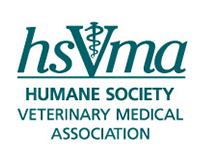Helping Students Push for Ethical SourcesJuly 7, 2008 HSVMA has partnered with the Animal Research Issues division of The Humane Society of the United States to support veterinary students who want to develop Educational Memorial Programs (EMPs) at their schools. Several veterinary schools have already established EMPs—also known as willed body programs, client donation programs, and body donation programs—as a means of securing "ethically-sourced" cadavers for students' anatomy and surgical training. EMPs are modeled after human body donation programs, with the bodies of deceased animals being donated to the veterinary teaching hospital directly by their owners. They are considered ethically-sourced because the animals have either died of natural causes or have been euthanized for medical reasons. Concerns about Class B, Shelter Sources Shelters and Class B dealers are often sources of animals used in veterinary school training. One source of dog and cat cadavers at veterinary schools are Class A dealers, who sell animals born and raised for the sole purpose of being sold to research facilities and universities. Another common source are Class B dealers, which include biological supply companies. Class B dealers are licensed by the U.S. Department of Agriculture to purchase animals from animal shelters, other Class B dealers, auctions, or individuals who have bred and raised the animals themselves. Serious concerns have been raised regarding the procurement, transportation, housing, and treatment of animals by Class B dealers. There is documented evidence that some Class B dealers have bought or sold stolen family pets, as well as fraudulently answered "free-to-good-home" ads with the intention of selling the pets to research and educational facilities. There have also been several investigations into biological supply companies and their methods of handling animals. Animal shelters are another source of cadavers, although this practice also creates ethical concerns, as it essentially takes advantage of the animal overpopulation problem to supply veterinary training needs. Veterinary Students: Pushing for a ProgramTo date, there are at least nine veterinary schools in the United States that have an EMP available to supply cadavers for training, although some of these programs are more active than others. At most schools, the EMPs receive donations of dog and cat cadavers from the veterinary teaching hospital or local clinics. Meanwhile, the University of Florida College of Veterinary Medicine has a unique EMP that supplies equines and other large animals for anatomy and surgery training. In most cases, the EMPs were initiated by motivated students or faculty members who were concerned about killing healthy animals for veterinary training purposes. As a result, HSVMA and The HSUS are supporting veterinary students seeking to start an EMP by offering a summer stipend to develop a proposal and up to $2,000 in startup costs to the veterinary school for equipment and supplies. Veterinary consultants who have worked on EMPs also are available to offer assistance. Last year, three students had qualified for the summer stipend. A report on their efforts and the development of the programs will be available soon. Updated February 24th, 2009 |
